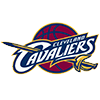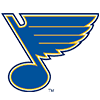Although the All-Star break is typically considered the midpoint of the season, the 4th of July might actually be a more accurate marker. Most teams have either just played their 81st game or will play it on the 4th, leaving roughly half of the season left to be played.
Having watched so many players make so many plate appearances and play so many games – the league has seen 91,720 plate appearances over 1,209 games already – it can be tempting to say that we have a solid grip on what will happen over the rest of the season. That's such a wealth of information, after all.
But while it is true that we are much, much more informed on how this year's crop of players will do now than we were back in March, we don't have quite as firm a grip as one might think.
At this point, most full-time starting batters have seen somewhere from 275 to 350 plate appearances and most healthy starting pitchers have faced between 375 and 500 batters. The Saber Library over at FanGraphs has an excellent entry on one of the big buzz phrases of the sports world: sample size. Specifically, the entry refers to when we can stop issuing those pesky small sample size alerts and start to treat collections of plate appearances as meaningful.
Hitters
Here are the statistics that have become reliable for hitters at the halfway point:
50 PA: Swing%
100 PA: Contact Rate
150 PA: Strikeout Rate,
Although the All-Star break is typically considered the midpoint of the season, the 4th of July might actually be a more accurate marker. Most teams have either just played their 81st game or will play it on the 4th, leaving roughly half of the season left to be played.
Having watched so many players make so many plate appearances and play so many games – the league has seen 91,720 plate appearances over 1,209 games already – it can be tempting to say that we have a solid grip on what will happen over the rest of the season. That's such a wealth of information, after all.
But while it is true that we are much, much more informed on how this year's crop of players will do now than we were back in March, we don't have quite as firm a grip as one might think.
At this point, most full-time starting batters have seen somewhere from 275 to 350 plate appearances and most healthy starting pitchers have faced between 375 and 500 batters. The Saber Library over at FanGraphs has an excellent entry on one of the big buzz phrases of the sports world: sample size. Specifically, the entry refers to when we can stop issuing those pesky small sample size alerts and start to treat collections of plate appearances as meaningful.
Hitters
Here are the statistics that have become reliable for hitters at the halfway point:
50 PA: Swing%
100 PA: Contact Rate
150 PA: Strikeout Rate, Line Drive Rate, Pitches/PA
200 PA: Walk Rate, Ground Ball Rate, GB/FB
250 PA: Fly Ball Rate
300 PA: Home Run Rate, HR/FB
We can probably believe in the resurgence of Adam Dunn – 25 homers on a 35.7% HR/FB rate. Edwin Encarnacion and Josh Reddick (22 and 19 home runs respectively) have been surprises that we can believe in as well.
Carlos Lee, Michael Brantley, Marco Scutaro and Yadier Molina all have batting averages over .280 largely due to incredibly high contact rates – none has struck out in more than 10% of plate appearances, with Lee leading the league at 6.2%. Similarly, there's reason to hold hope for players like Shane Victorino (10.8% strikeout rate, .251 batting average) and Yunel Escobar (9.9% strikeout rate, .252 batting average). Low strikeout rates usually lead to big batting averages.
On the downside, Lee only owns a 6.0% HR/FB, under half of his career mark. Alexei Ramirez owns just a 2.4% mark, and Michael Young's 4.5% is just another point in evidence of the worst season of his career.
Mike Napoli is still hitting for power, but with a 31.1% strikeout rate, the odds of him putting up a respectable batting average in the second half are low. Other strikeout kings this year include Pedro Alvarez, Carlos Pena, Kirk Nieuwenhuis, Rickie Weeks, Kelly Johnson, and Corey Hart. Don't expect these guys to fix any batting average issues in the second half of the season. It's very difficult to hit over .250 while striking out over 26% of the time, as all of these players have done in the first half.
But perhaps what's more interesting is what we can't find reliable yet. Here are the thresholds for the other statistics in the study:
500 PA: OBP, SLG, OPS, 1B Rate, Popup Rate
550 PA: ISO
That's it. Batting average was in the study, but didn't stabilize even after 650 plate appearances.
As an example, Melky Cabrera is having an insane season, hitting .352. Although his power numbers are solid – 17 doubles, seven triples, and seven home runs – his season has largely been built on an absurd singles rate, as he has 81 in 318 at-bats (25.4%). Even in last year's breakout season, Cabrera singled in just 20.3% of at-bats. Three months tell us that Cabrera is the best singles hitter in the league, but chances are he'll settle down a bit in the second half – even 318 at-bats isn't enough information.
Pitchers
Things are even less certain with pitchers. Perhaps that's to be expected. Hitters seem to control more of their results than pitchers, who are constantly at the mercy of the defenses behind them. Here's the full list of stats we can feel confident in for pitchers at this point:
150 BF – K/PA, grounder rate, line drive rate
200 BF – flyball rate, GB/FB
Although no pitchers are quite up to 500 batters faced, some are close and will likely get there with their next starts, giving us a window into the following:
500 BF – K/BB, pop up rate
550 BF – BB/PA
Again, not much. The results of the season so far don't give us much insight into how a pitcher will do in the standard four rotisserie categories for starters. Wins are too team-oriented, ERA is too defense-oriented, and WHIP is too hit-oriented. Hit rate doesn't even stabilize until after 750 batters faced.
But there are two things we do know, more or less: strikeouts and walks. Chasing strikeouts will, in many cases, lead you to the other three statistics that win standard leagues. It's at least one reason to believe in R.A. Dickey (9.24 per nine innings), a reason to believe Tim Lincecum can pull it together (9.74) and a point in the favor of such players as Max Scherzer (11.36), Jeff Samardzija (9.16), Felix Doubront (9.13) and Matt Moore (8.81).
This is why statistics like FIP exist. The best bets are players with good strikeout rates, low walk rates, and who get ground balls. Even two of the three makes for a good combination – see Jordan Zimmermann (6.27 K/9, 1.74 BB/9, 49.7% ground ball rate), Johnny Cueto (6.75 K/9, 1.96 BB/9, 47.5% ground ball rate) and Chris Capuano (8.04 K/9, 2.88 BB/9, 41.3% ground ball rate).
Predicting relievers? Good luck. The closer with the most batters faced is Heath Bell, at 148. We have so little information on relievers that it's nearly impossible to predict on statistics alone which will thrive and which will falter in the second half.
Using first half statistics to fuel decision-making can be tempting, but make sure you know what you're looking at first. Half of a season is at once so much as it is so little. There are still miles to go and loads to learn before we put the season to sleep.







































